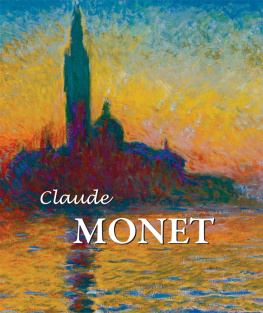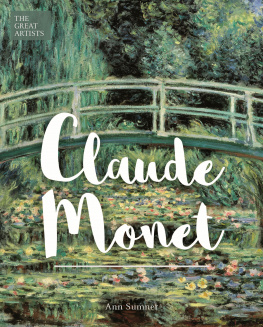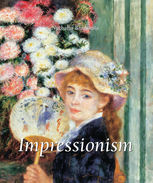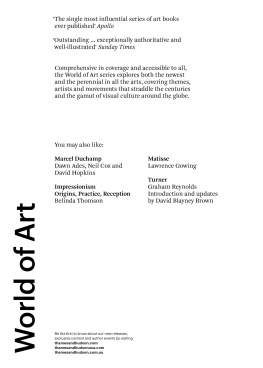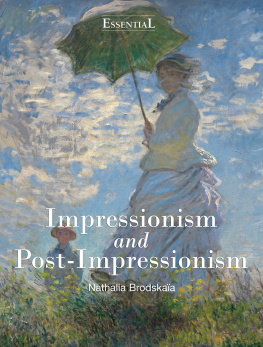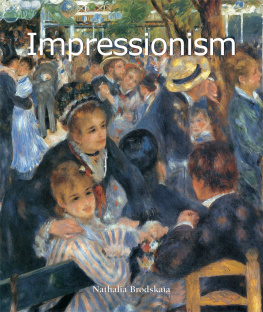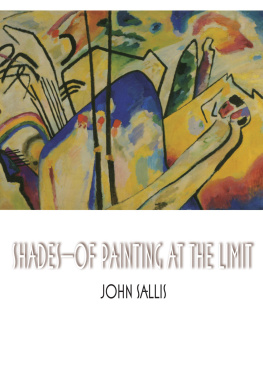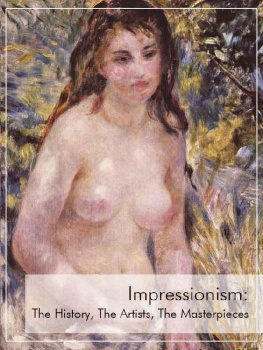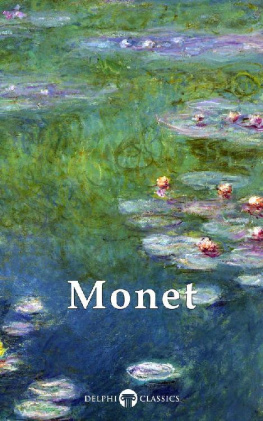Authors: Nina Kalitina and Nathalia Brodskaia
Layout:
Baseline Co. Ltd
61A-63A Vo Van Tan Street
4 th Floor
District 3, Ho Chi Minh City
Vietnam
Library of Congress Cataloging-in-Publication Data
Kalitina, N. N. (Nina Nikolaevna)
Claude Monet / Nina Kalitina and Nathalia Brodskaia. - 2nd ed.
p. cm.
Includes bibliographical references and index.
1. Monet, Claude, 1840-1926--Criticism and interpretation. I. Monet, Claude, 1840-1926. II. Brodskaia, N. V. (Natalia Valentinovna) III. Title.
ND553.M7K34 2011
759.4--dc23
2011023922
Confidential Concepts, worldwide, USA
Parkstone Press International, New York, USA
All rights reserved.
No part of this publication may be reproduced or adapted without the permission of the copyright holder, throughout the world. Unless otherwise specified copyrights on the works reproduced lie with the respective photographers, artists, heirs or estates. Despite intensive research, it has not always been possible to establish copyright ownership. Where this is the case, we would appreciate notification.
ISBN: 978-1-78310- -
Nina Kalitina and Nathalia Brodskaia
Claude Monet


Contents
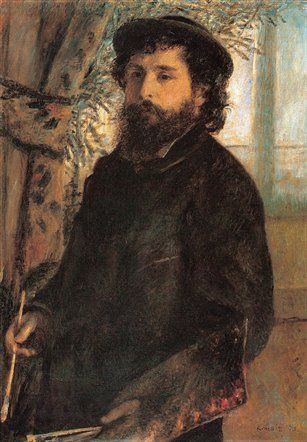
Pierre-Auguste Renoir ,
Claude Monet, 1875.
Oil on canvas, 85 x 60.5 cm .
Muse d Orsay, Paris.
The Beginnings of Impressionism
The term Impressionism not only designates a trend in French art, but also a new stage in the development of European painting. It marked the end of the neo-classical period that had begun during the Renaissance. The Impressionists did not entirely break with the theories of Leonardo da Vinci and the rules according to which all European academies had conceived their paintings for over three centuries. All the Impressionists had more or less followed the lessons of their old-school professors, each of them having their preferred old masters. But for the Impressionists, their vision of the world and their concept of painting had changed. The Impressionists cast doubt on paintings literary nature, the necessity of always having to base a painting on a story, and consequently, its link to historical and religious subjects. They chose the genre of landscape because it only referred to nature and nearly all the Impressionists started their artistic itinerary with the landscape. It was a genre that appealed to observation and observation alone, rather than to the imagination, and from observation came the artists new view of nature, the logical consequence of all his prior visual experience: it was more important to paint what one saw, rather than how one was taught that was a fact! It was impossible to see the workings of nature within the confines of the studio, so the Impressionists took to the outdoors and set up their easels in fields and forests. The close observation of nature had a power which was, until then, undreamt of. If the natural landscape was incompatible with the traditional concept of composition and perspective, then artists had to reject academic rules and obey nature. If traditional pictorial technique stood in the way of conveying the truths artists discovered in nature, then this technique had to be changed. A new style-genre of painting that lacked traditional finish and often resembled a rapid oil sketch appeared in the works of the Impressionists. But the Impressionists still lacked a new aesthetic theory that could replace tradition. Their one firm conviction was that they could employ any means to arrive at truth in art. These daredevils assumed that the work of the artist could be done without professing or practising a religious respect of academic theories and professional practices, wrote one critic, three years after the First Impressionist Exhibition in 1877. To those who ask them to formulate a program, they cynically reply that they have none. They are happy to give the public the impressions of their hearts and minds, sincerely, naively, without retouching. (L. Venturi, op. cit., vol. 2, p. 330).
Painters born circa 1840 entered the field of art already armed with the notion that they could use subjects from everyday life, but in the early nineteenth century, France still had the most conservative attitude in Europe when it came to landscape painting. The classically composed landscape, although based on a study of details from nature, such as the observation of trees, leaves, and rocks, reigned over the annual Salon.
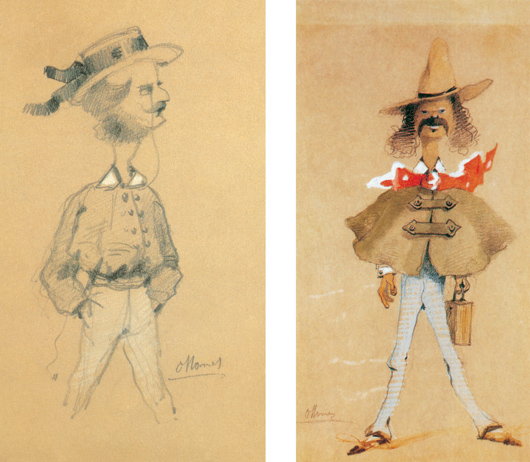
Man with a Boater Hat, 1857.
Pencil on paper, 24 x cm .
Muse Marmottan, Paris.
The Painter with a Pointed Hat, 1857.
Pencil and gouache on paper.
Private collection, Paris.
The Dutch masters, however, had started painting the well-observed living nature of their country in the seventeenth century. In their small, modest canvases appeared various aspects of the real Holland: its vast sky, frozen canals, frost-covered trees, windmills, and charming little towns. They knew how to convey their countrys humid atmosphere through nuanced tonalities. Their compositions contained neither classical scenes nor theatrical compositions. A flat river typically ran parallel to the edge of the canvas, creating the impression of a direct view onto nature. Elsewhere, the Venetian landscape painters of the eighteenth century gave us the specific landscape genre of the veduta. The works of Francesco Guardi, Antonio Canaletto, and Bernardo Bellotto have a theatrical beauty built upon the rules of the neoclassical school, but they depict real scenes taken from life; indeed, they were so noted for such topographical detail that they have remained in the history of art for their documentary evidence of towns long since destroyed. Moreover, the vedute depicted a light veil of humid mist above the Venetian lagoons and the particularly pellucid quality of the air over the riverbanks of the island of Elba. The future Impressionists also had a keen interest in painters whose work had yet to find its way into museums, such as the sketching club founded in England in the late eighteenth century. Its members, who worked directly from nature and specialised in light landscape sketches, included Richard Parkes Bonington, who died in 1828 at the age of twenty-six. Bonningtons watercolour landscapes had a novel limpidity and grace as well as the subtle sensation of the surrounding air. A large part of his life had been spent in France, where he studied with Antoine-Jean Gros and was close to Delacroix. Bonnington depicted the landscapes of Normandy and the le-de-France: locations where all the Impressionists would later paint. The Impressionists were probably also familiar with the work of the English painter John Constable, from whom they may have learned how to appreciate the integrity of landscape and the expressive power of painterly brushwork. Constables finished paintings retain the characteristics of their sketches and the fresh colour of studies done after nature. And the Impressionists surely knew the work of Joseph Mallord William Turner, acknowledged leader of the English landscape school for sixty years until 1851. Turner depicted atmospheric effects; fog, the haze at sunset, steam billowing from a locomotive, or a simple cloud became motifs in and of themselves.

